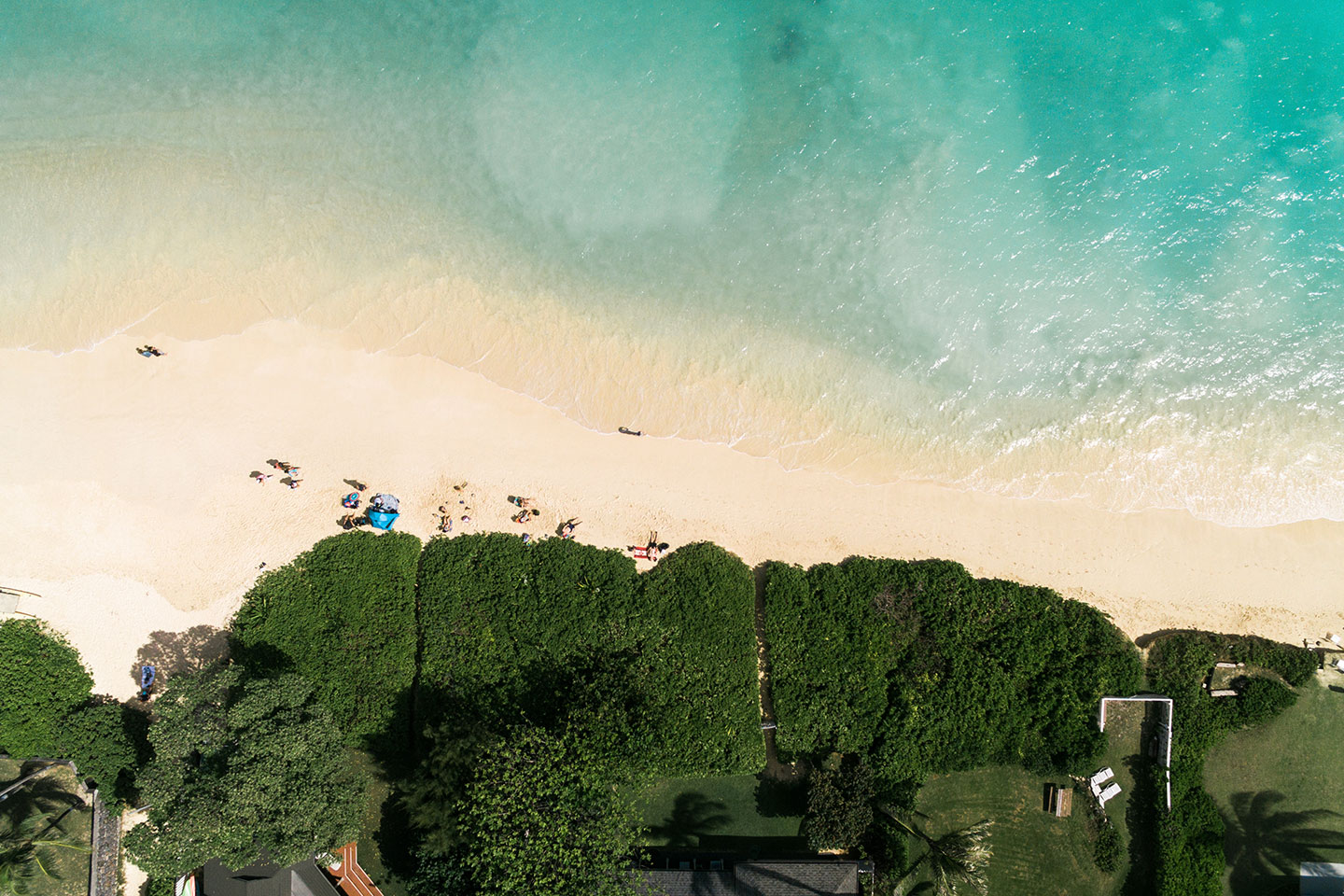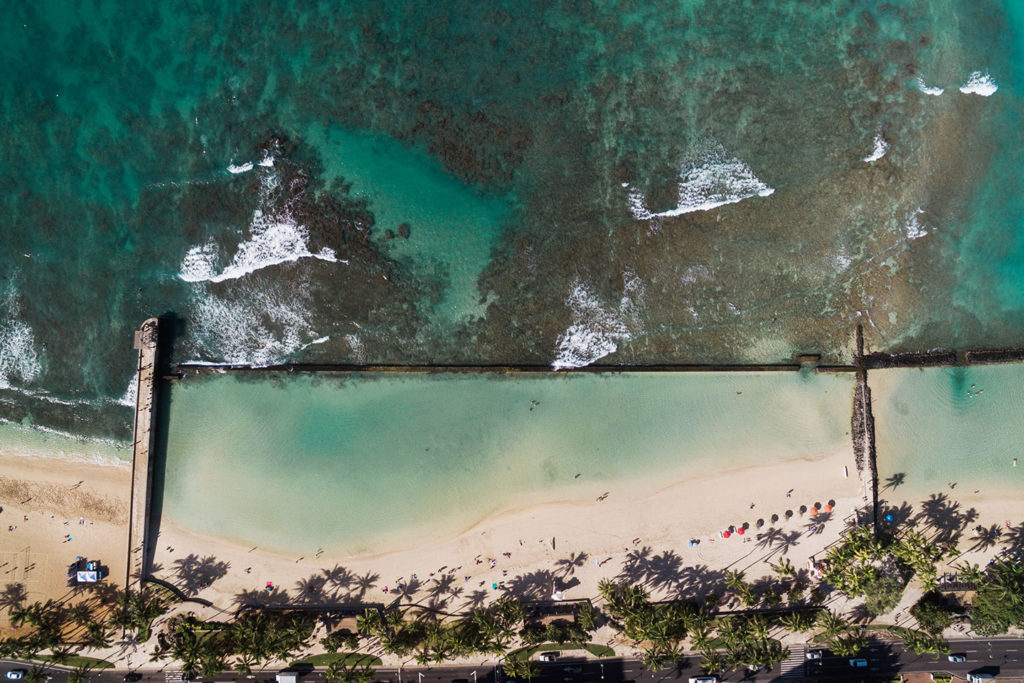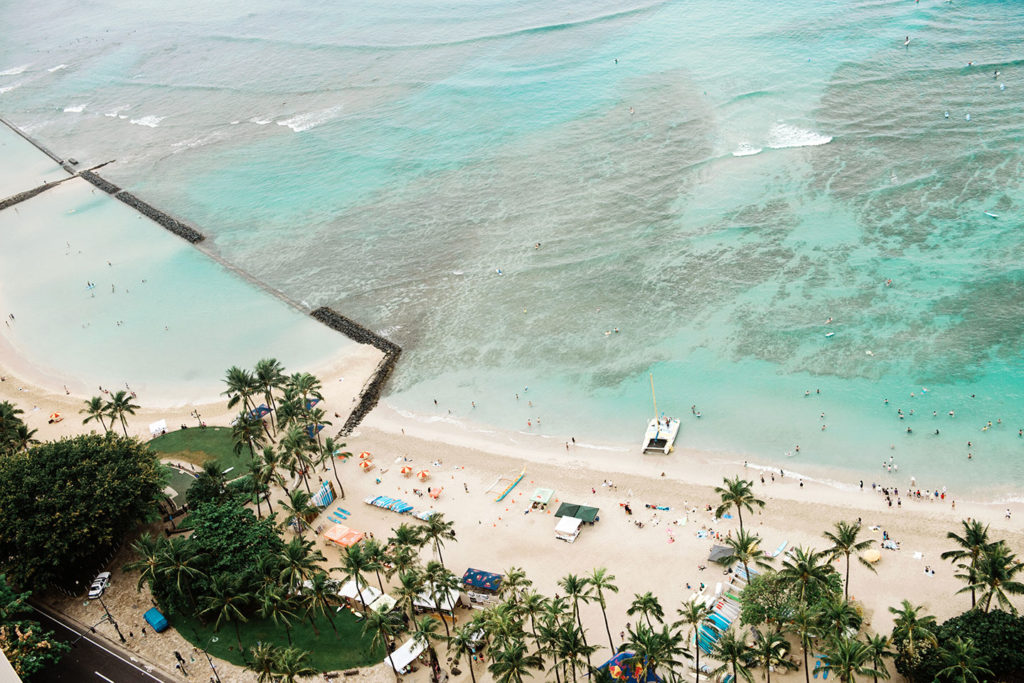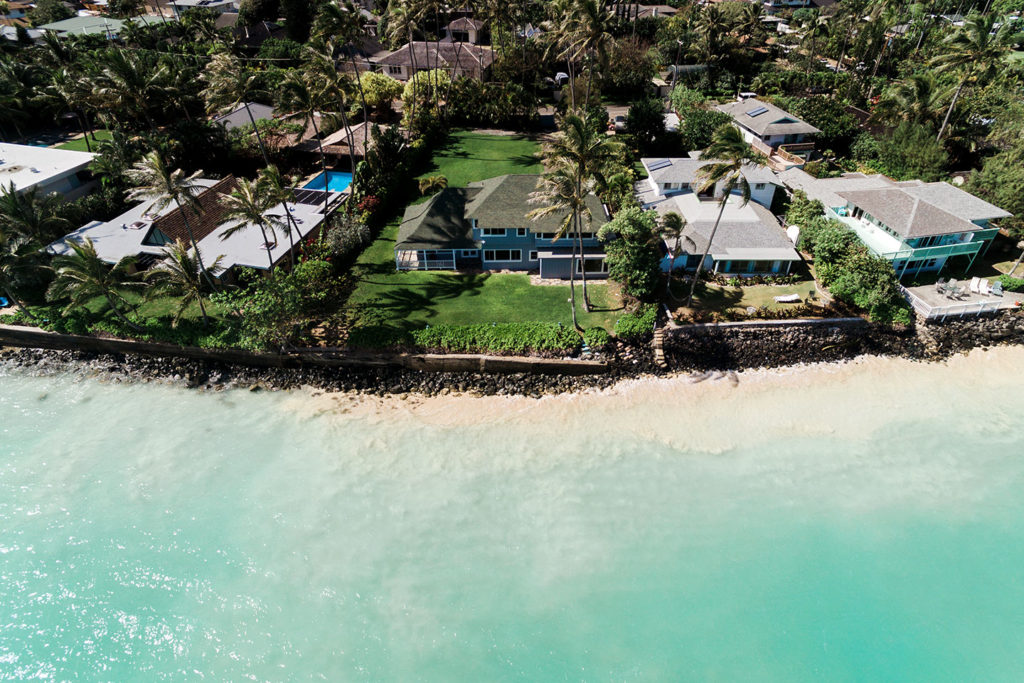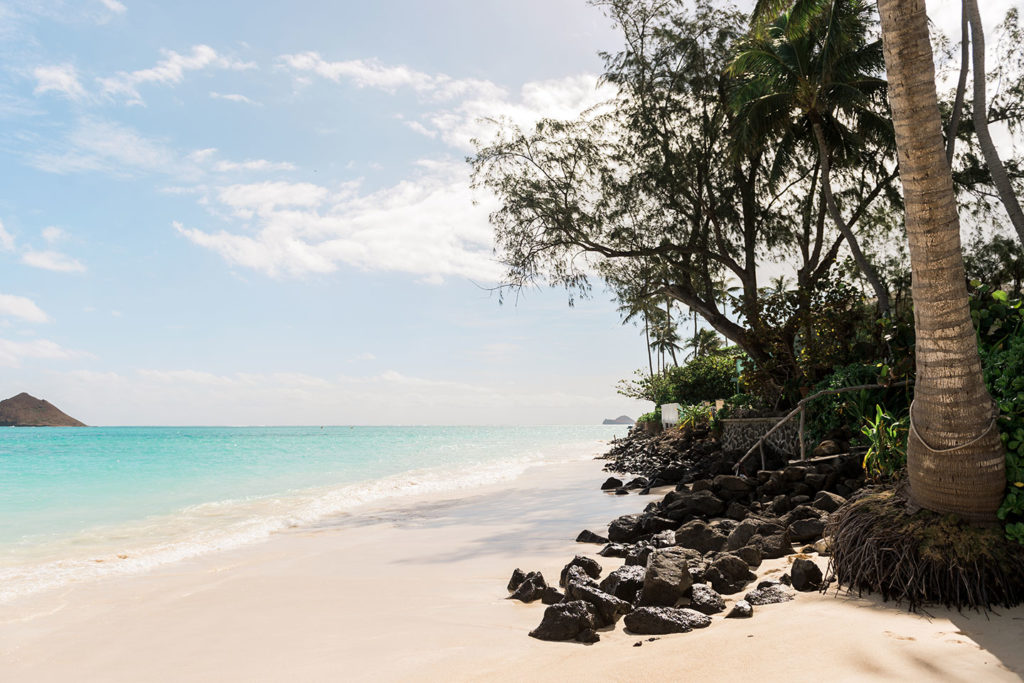Text by Timothy A. Schuler
Images by John Hook
It was late September 2016, and protesters lined Honoapi‘ilani Highway on Maui’s west shore, waving and throwing shakas at the stream of cars passing by. The highway that the crowd stood on was falling into the sea, the result of poor planning combined with decades of pounding surf. Erosion has plagued Hawai‘i’s beaches since the beginning of the 20th century, much of it caused, or complicated, by the “hardening” of the coastline: shoring up land with concrete seawalls, creating harbors and lagoons with stone revetments.
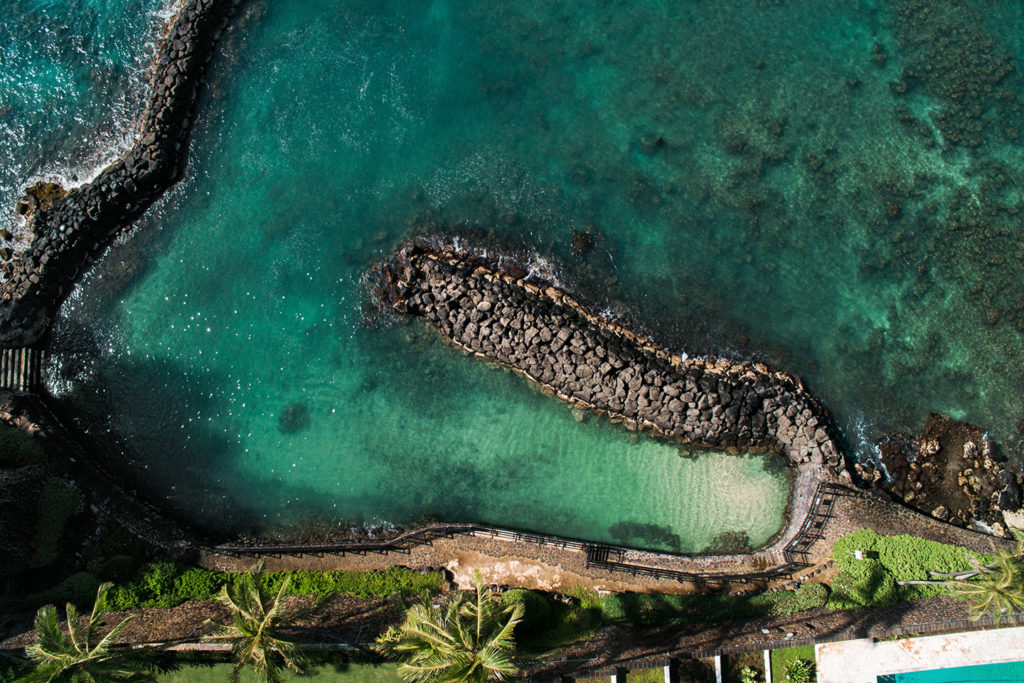
“Save Our Surf,” the sign read, big yellow letters on green-painted plywood. “NO MORE SEAWALLS.”
In Olowalu, waves lapped at the crumbling concrete along Honoapi‘ilani Highway and occasionally, during storms and large swells, crashed on the road itself. To protect drivers and beachgoers, the Hawai‘i Department of Transportation planned to construct a 900-foot-long seawall along the road.
But members of Mālama Olowalu, a community group dedicated to preserving this culturally significant portion of Maui’s western shoreline, which was a pu‘uhonua, or place of refuge, wanted the state to explore other options.
The group argued that a seawall, while fortifying the road for a time, would ultimately fail. In the more immediate future, it would destroy what little of the beach remained. The surf break would disappear, as would the Hawaiian monk seals.
Among mankind’s many shortsighted solutions, seawalls sit somewhere near the top. The first seawalls were built by the Romans, who used pozzolanic ash to form concrete with saltwater.
Since then, largely in response to coastal erosion, seawalls have been constructed around the world. Hawai‘i’s first marine structures—including seawalls (which run parallel to shore) and groins (which are perpendicular to shore)—appeared in Waikīkī in the late 1800s.
But a seawall only works insofar as you only care about the hundred feet of ocean frontage of a property.
And really, they aren’t worth it even then. While seawalls can succeed in protecting inland structures for a time, they sever the natural exchange of sand and sediment that feeds a healthy beach—within just a few years, all traces of it can disappear.
The Lanikai Beach coastline on O‘ahu’s eastside is a perfect example.
As homeowners have built seawalls to keep the sea at bay, the beach, which once stretched from Wailea Point to Alala, has shrunk considerably, to just 10 percent of what once existed. You can see the damage: Along the armored areas, the sand is almost completely gone.
This erosion problem posed by seawalls also tends to get washed down shore. As George Atta, Honolulu’s former director of city planning explained it, constructing a seawall creates a domino effect.
“We are very well aware that once we start one seawall, we will probably end up with a line of them in 20 years,” he said in 2014.
In Hawai‘i, it didn’t take long to see that seawalls weren’t an ideal solution. As early as 1917, the territory’s Board of Harbor Commissioners prohibited the building of seawalls in response to the dramatic loss of sand in Waikīkī. This was largely ignored. Homeowners and hotels built barriers, and bulldozed coastal dunes to create unobstructed views.
The world has changed somewhat since then. Hawai‘i now requires an environmental assessment and public input before it will issue permits for a new seawall. (At the same time, it has acknowledged that some coastal armoring must be done to protect critical infrastructure like roads, or economic engines like Waikīkī Beach.)
But there’s been another, more alarming shift since 1917: The ocean is higher. While politicians have debated the existence of climate change, sea level in Hawai‘i has, on average, risen by more than half an inch every decade for a century. That’s six inches in the past 100 years alone.
“As sea-level rise has progressed, and we’ve had more and more beach erosion, the foundations [of seawalls] that were once buried are now exposed,” says Mike Foley, a coastal engineer at Oceanit, a Honolulu-based technology and engineering company. “Once that happens, it’s just a matter of time until these structures fail.”

Many of the world’s most progressive designers and engineers know that they must work with, not against, nature. In the wake of Superstorm Sandy, which battered New York City with a record 14-foot storm surge and killed more than 100 people, the city invested in new forms of protective infrastructure, including public parks designed as buffer zones and an artificial oyster reef that can attenuate waves.
In these and other waterfront projects, the goal is to design defenses that serve other functions, too. Hunter’s Point South Waterfront Park in Queens, for instance, acts as a giant sponge during a storm, absorbing rainfall and protecting inland neighborhoods from flooding. The rest of the year, it’s simply a great park.
Such strategies are part of a growing interest in what are sometimes called “living shorelines,” which are coastal areas that have been restored to more natural conditions, or are manmade but use native ecosystems to provide a “living” buffer against storm surge and sea-level rise.
Tara Owens, a coastal hazards specialist with Maui County and the University of Hawai‘i’s Sea Grant College, says dune restoration is one of the cheapest and most effective ways to create a living shoreline.
“Dunes provide a lot of ecosystem services, like protecting development from high-wave events,” Owens says.
They also protect beaches. Maui has lost at least four miles of beach over the past hundred years, more than O‘ahu or Kaua‘i. In 2003, Maui was the first county in Hawai‘i to pass an ordinance prohibiting the destruction of a frontal dune. On the island, dune restoration projects led largely by volunteers are rehabilitating habitats and enhancing the recreational value of the beaches they line.
While coastal armor may continue to be necessary in places like Waikīkī, where failing to repair seawalls and groins would result in a dramatically different beach, living shorelines are gaining traction. In the summer of 2016, the Army Corps of Engineers proposed a new general permit that would authorize such nature-based systems.
Around the same time, a report from the National Oceanic and Atmospheric Administration highlighted the economic and environmental benefits of living shorelines, as well as hybrid models—that is, using seawalls in concert with ecological strategies.
Even seawalls can be designed to play a role in the native ecosystem, Foley says. It’s often just a matter of adding nooks and crannies that will attract marine life. This underwater variation encourages the growth of algae and coral, which, in turn, brings fish and octopus.
“You basically design for the ecology to take over,” he says. Besides the ecological benefits, this hybrid approach could prove cost-effective, reducing a seawall’s size (and therefore, its price tag) while simultaneously extending its lifespan. “At Oceanit, we come up with ideas and we build prototypes,” Foley says. “What needs to happen, in order to [see] innovation in seawall design, is we need to test some of these prototypes in the ocean.”
In many ways, the islands are an ideal laboratory in which to assess these ideas. They are home not only to some of the most renowned marine researchers on the planet, but also, a highly engaged public. Hawai‘i has the opportunity to pave the way.
Says Foley, “My goal is to make Hawai‘i a leader in this area.”




